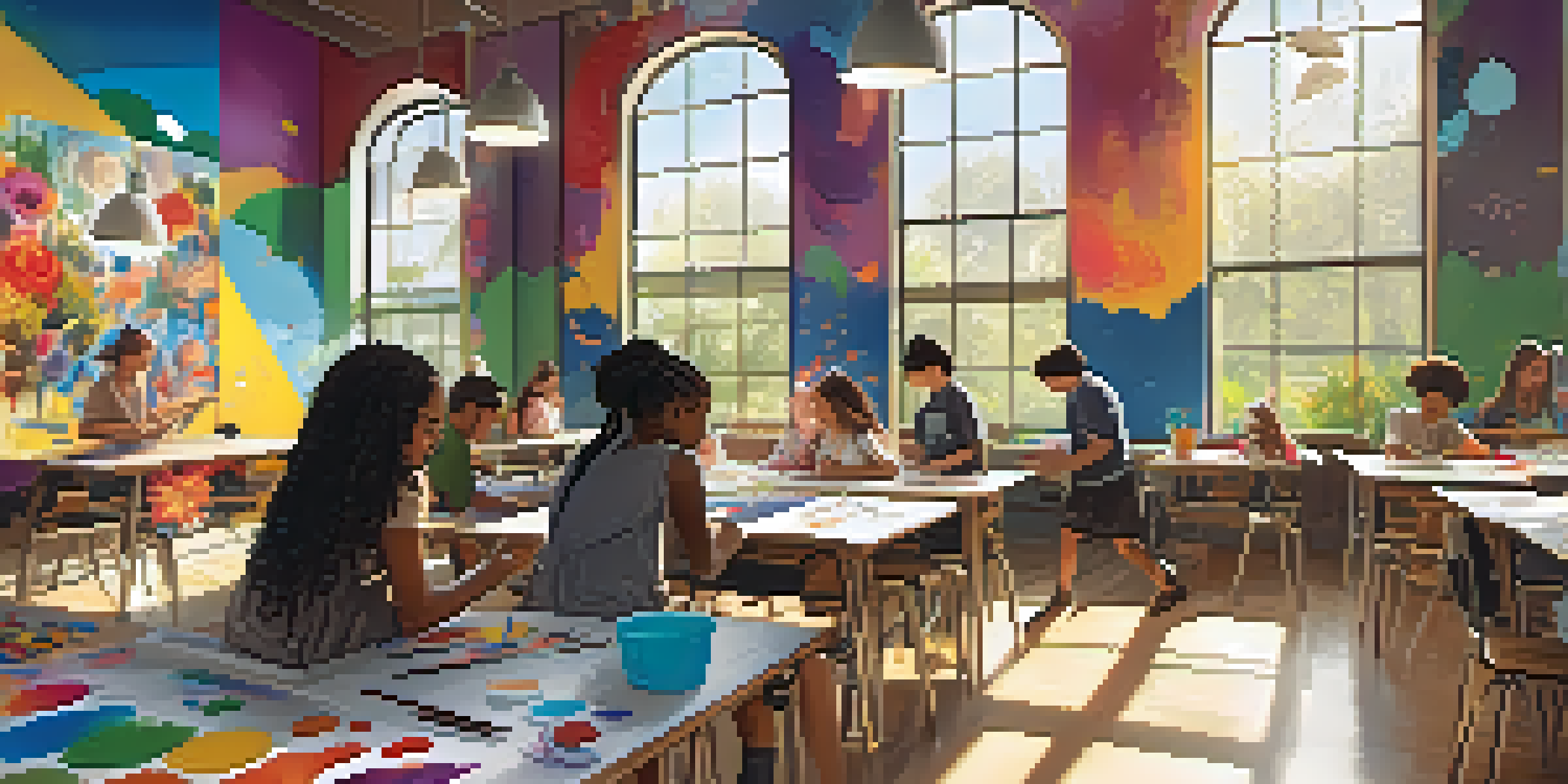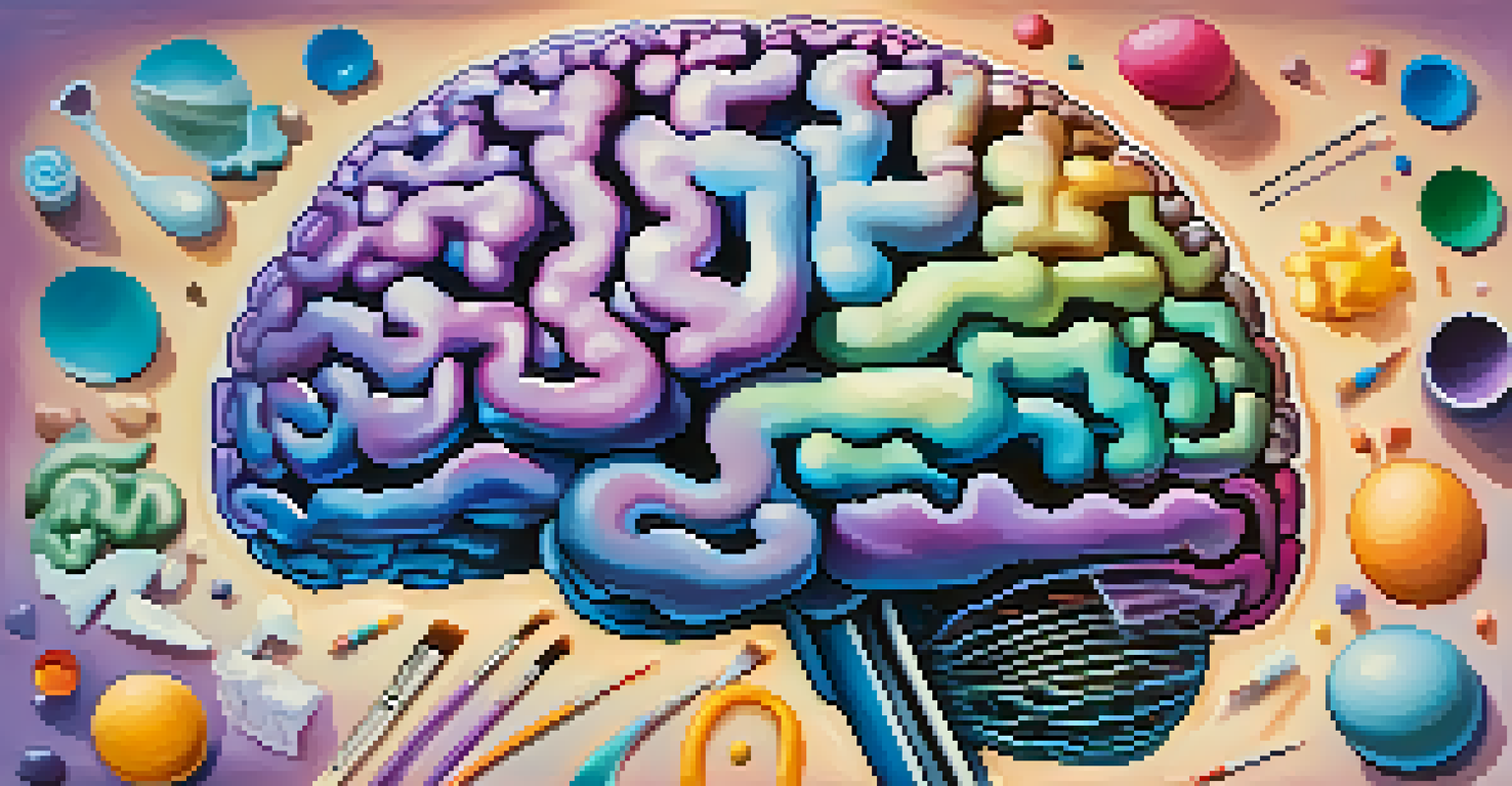Entheogens as Tools for Enhancing Creativity in Education

Understanding Entheogens: What Are They?
Entheogens are substances, often derived from plants, that have been used for centuries in various cultures for spiritual and creative purposes. Common examples include psilocybin mushrooms and peyote. They can alter perception, enhance emotions, and stimulate creative thinking, making them intriguing tools for education.
The mind is like a parachute. It doesn’t work if it isn’t open.
The term 'entheogen' comes from the Greek words meaning 'generate the divine within.' This highlights their traditional use in rituals and creative practices. By tapping into these altered states of consciousness, individuals often report heightened intuition and innovative ideas.
In recent years, there has been a resurgence of interest in entheogens, particularly within creative fields. Educators and researchers are beginning to explore how these substances can potentially unlock new avenues of thought and creativity in students.
The Science Behind Entheogens and Creativity
Research suggests that entheogens like psilocybin can promote neuroplasticity, which is the brain's ability to reorganize itself by forming new neural connections. This can be vital for creative thinking, as it allows individuals to make unique connections and novel associations between ideas.

Studies have shown that these substances can lead to increased divergent thinking, a cognitive process that generates creative ideas by exploring many possible solutions. This type of thinking is essential in education, where students are encouraged to think outside the box.
Entheogens Enhance Creativity
Entheogens can promote neuroplasticity and divergent thinking, which are essential for creative problem-solving in educational settings.
Moreover, the relaxing and introspective effects of entheogens can help reduce anxiety and fear of failure, creating a safe space for students to express their creativity without judgment. This combination of neurobiological effects and emotional support can be powerful in an educational setting.
Historical Use of Entheogens in Education
Throughout history, various cultures have recognized the educational potential of entheogens. Indigenous peoples often used these substances in rites of passage and learning ceremonies, promoting creativity and self-discovery among participants.
Creativity is intelligence having fun.
In the 1960s, there was a surge of interest in psychedelics among educators and artists, with many believing that they could enhance creative expression and learning. Figures like Timothy Leary advocated for their use in educational contexts, positing that they could unlock human potential.
While the mainstream view has fluctuated, these historical examples underscore the longstanding connection between entheogens and creativity. They serve as a reminder that innovative educational approaches often draw from the past.
Potential Benefits of Entheogens in Modern Education
Integrating entheogens into educational practices could offer numerous benefits, such as fostering open-mindedness and encouraging risk-taking in creative endeavors. Students may feel more empowered to explore unconventional ideas, leading to breakthrough innovations.
Additionally, entheogens can enhance empathy and collaboration among students, which are crucial skills in today's interconnected world. By promoting deeper understanding and shared experiences, these substances can foster a more inclusive and creative learning environment.
Historical Educational Practices
Various cultures have long recognized the educational potential of entheogens, using them in rituals and learning ceremonies to foster creativity.
Furthermore, the ability to view challenges from new perspectives can significantly enhance problem-solving skills. This cognitive flexibility is essential in education, where adapting to new information and ideas is a daily requirement.
Challenges and Considerations in Using Entheogens
Despite the potential benefits, there are significant challenges and ethical considerations surrounding the use of entheogens in education. Legal restrictions in many places can hinder exploration and research in this area, making it difficult to implement these practices responsibly.
Moreover, the subjective nature of entheogenic experiences means that results can vary widely from person to person. This unpredictability poses risks, especially in educational settings where the safety and well-being of students are paramount.
Lastly, there’s a need for thorough education and training for educators who might consider using entheogens as tools in their classrooms. Understanding the substances, their effects, and best practices for responsible use is crucial for ensuring a safe and beneficial experience.
Current Research and Future Directions
Current research on the use of entheogens in enhancing creativity is still in its infancy, but studies are beginning to emerge that explore their potential benefits in educational contexts. Universities and research institutions are increasingly interested in investigating how these substances can support learning and creativity.
Future studies may focus on controlled environments where educators can safely incorporate entheogens into curricula. This could involve workshops or retreats designed to harness these substances’ creative potential while ensuring participant safety.
Challenges in Implementation
Despite their potential benefits, the use of entheogens in education faces legal, ethical, and safety challenges that must be carefully addressed.
As public perception shifts and more research becomes available, the possibility of integrating entheogens into education may become a reality. The key will be balancing innovation with responsibility and ensuring that any use of these tools is guided by research and ethical considerations.
Conclusion: A New Frontier in Educational Creativity
The exploration of entheogens as tools for enhancing creativity in education represents an exciting frontier. While there are challenges, the potential benefits in fostering innovative thinking and problem-solving skills are worth considering.
By drawing on historical practices, scientific research, and the experiences of artists and educators, we can begin to envision a future where entheogens play a role in creative education. This could lead to more dynamic and engaging learning environments that empower students.

Ultimately, the conversation around entheogens in education challenges us to rethink traditional approaches and embrace new possibilities for fostering creativity and innovation in the classroom.